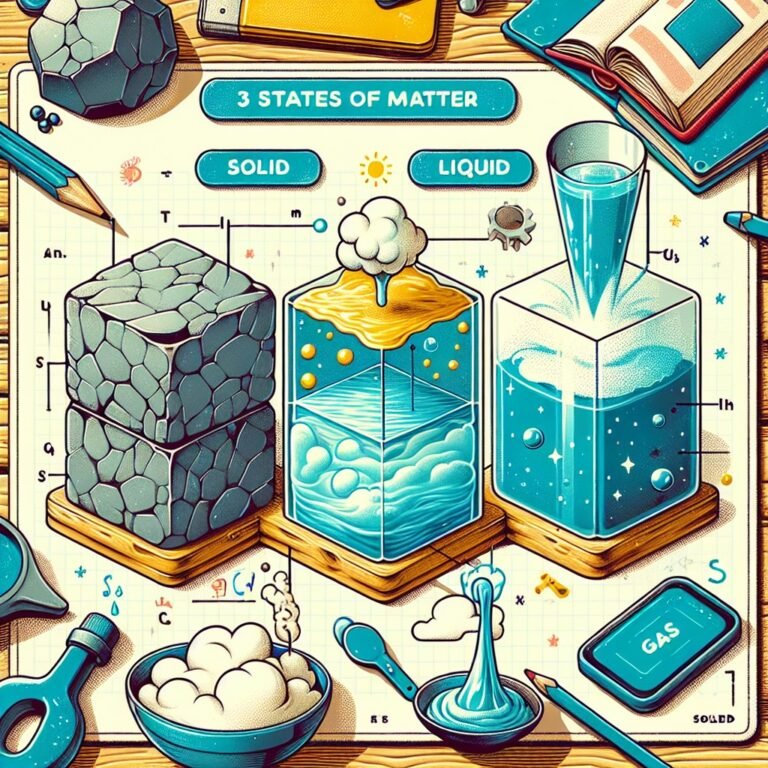Matter makes up everything around us, but it exists in various forms. What are the three states of matter?
Answer
The three primary states of matter are solid, liquid, and gas.
Simple Explanation
All stuff around us can be sorted into three main types: solids keep their shape, liquids take the shape of their container, and gases fill up whatever space they’re in!
Detailed Explanation
Understanding the three states of matter—solid, liquid, and gas—helps us comprehend the physical world. Solids have a fixed shape and volume because their particles are tightly packed together. For example, a rock is a solid; its shape doesn’t change unless you break it.
Liquids and Gases
Liquids, on the other hand, have a fixed volume but no fixed shape. They take the shape of their container. Think of water in a glass: the water stays the same amount (volume) but changes shape to match the glass. Gases are different; they have neither a fixed shape nor a fixed volume. Instead, gas particles spread out to fill the entire space they occupy, like the air in a balloon.
Examples and Transitions
- Ice (Solid): When you freeze water, it becomes ice, a solid that holds its shape.
- Water (Liquid): As ice melts, it turns into liquid water, adapting to the shape of its surroundings.
- Steam (Gas): When water boils, it turns into steam, a gas that expands to fill the air.
The transitions between these states can occur through processes like melting (solid to liquid), freezing (liquid to solid), condensation (gas to liquid), and evaporation (liquid to gas).
Conclusion
Identifying the three states of matter—solid, liquid, and gas—gives us insight into how materials behave and interact in our world.
FAQ
Q: Can matter exist in other states?
A: Yes, beyond solids, liquids, and gases, there are other states like plasma and Bose-Einstein condensates, but they are less common in everyday life.
Q: What causes matter to change states?
A: Changes in temperature and pressure can cause matter to change states. For instance, heating water causes it to evaporate into steam.
Q: Are there exceptions to the states of matter?
A: Yes, some materials can have unique properties, such as non-Newtonian fluids that can behave like solids under certain stress.
Q: How can we observe changes in states of matter?
A: You can observe changes by watching ice melt into water or boiling water turning into steam.
External Sources
Learn more about the states of matter from Chemistry World and Science Daily.




